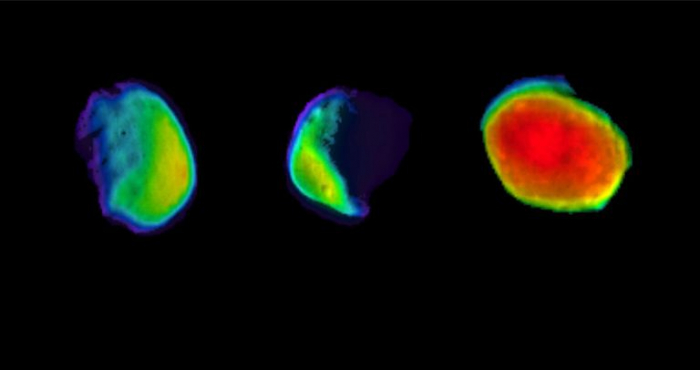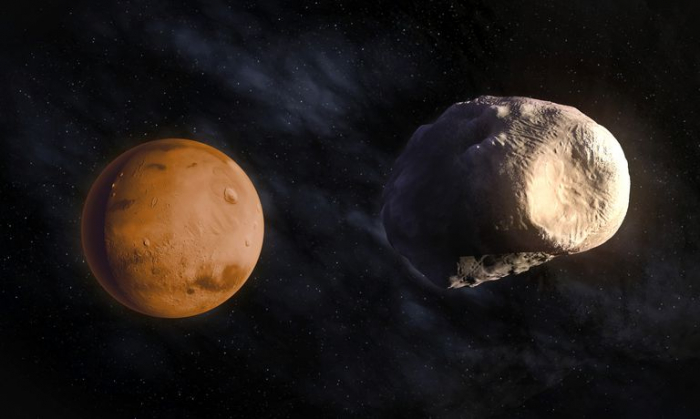Phobos is the biggest moon orbiting Mars, but that isn’t saying much: At only about seven miles across, it's really more of a large asteroid than a proper moon. In fact, many astronomers suspect Phobos was once an asteroid that Mars snatched up and then made its moon.
Because of its small stature, scientists have struggled to properly study Phobos. Short of landing on the moon or placing a spacecraft in orbit around it, the best we can do is take some distant pictures. And now, thanks to the new photo series, we can actually start to learn something about it.

For instance, the Odyssey's thermal camera took this collection of photos with the Sun directly behind Phobos. These images highlight temperature differences in various regions of the asteroid and hint at Phobos' true makeup. Rocky materials have different temperature signatures than metals like iron and copper, so the snapshots reveal a great deal about Phobos’ composition.
While many scientists suspect Phobos is a captured asteroid, it’s also possible the moon is a chunk of Mars itself knocked into space by a distant asteroid impact. Scientists could help settle the debate by determining what the moon is actually made of and whether its composition matches that of Mars.
But this is the most we’ll likely learn about Phobos for several years, at least until Japan’s upcoming Martian Moons eXploration (MMX) orbiter enters the picture. That orbiter is specifically designed to study the moons of Mars, and is expected to return a sample from one of them sometime next decade. Until then, we’ll have to gather as much as we can from Odyssey.
Popular Mechanics
















































